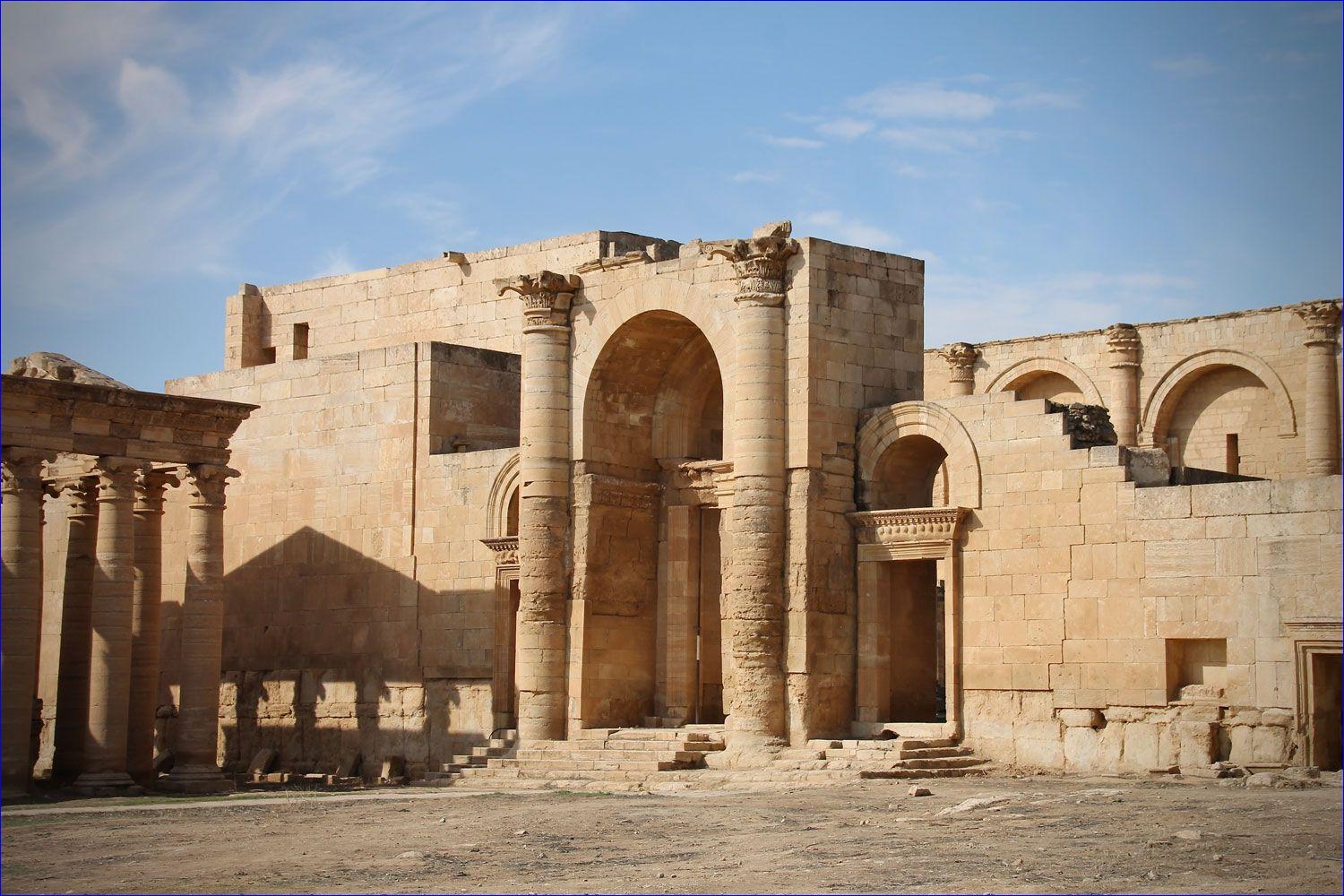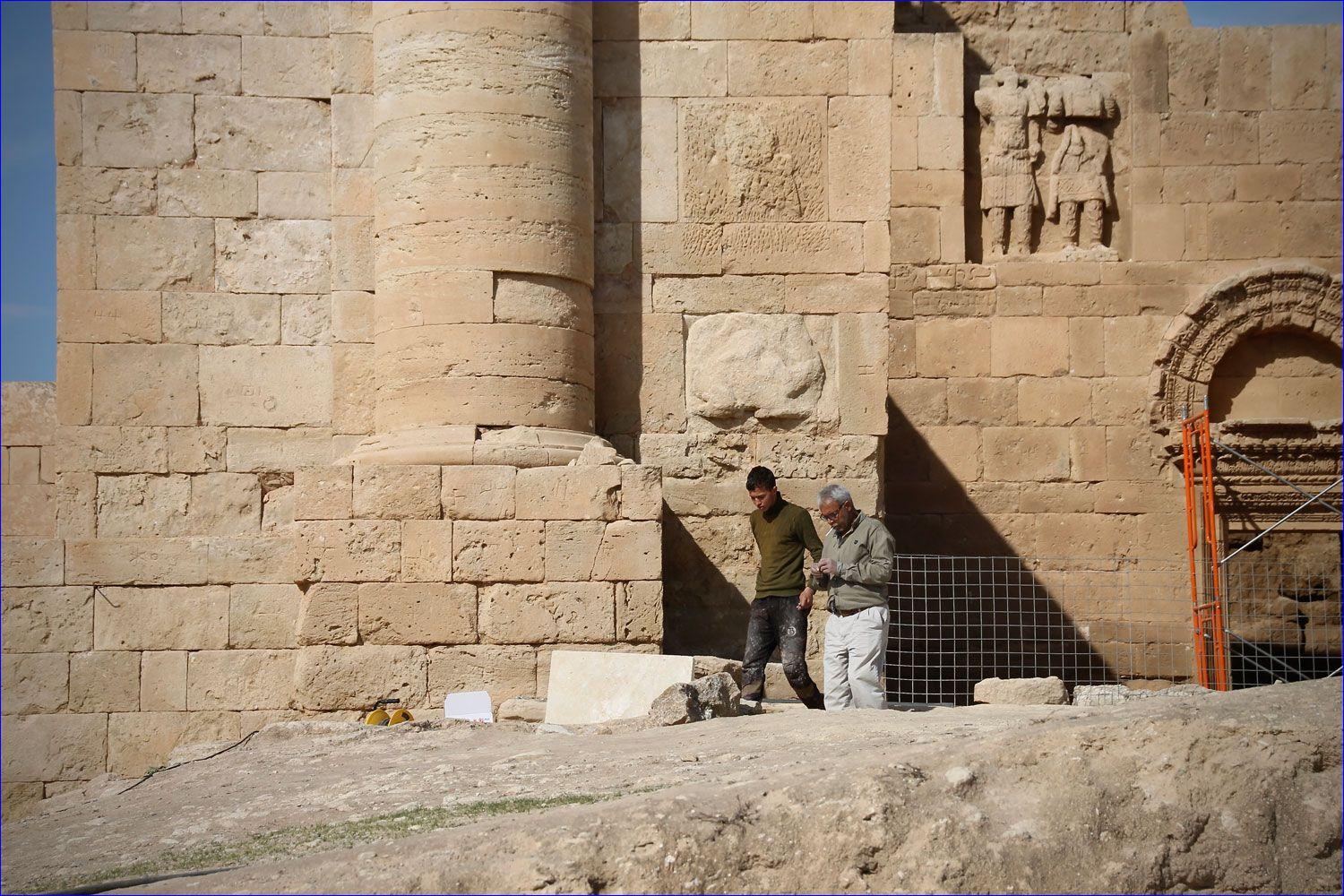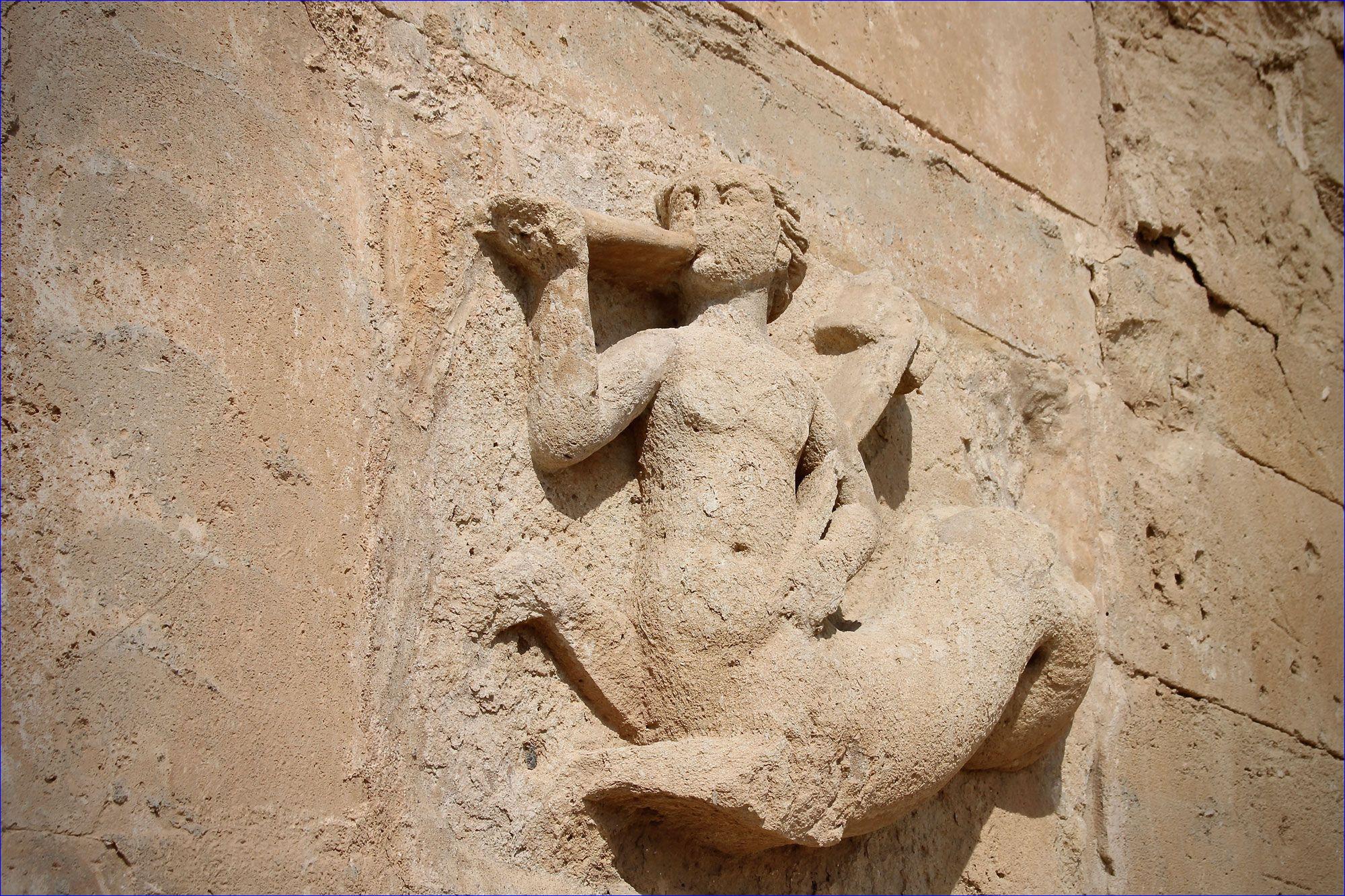


 Hadani Ditmars)
Hadani Ditmars)
Iraqi dignitaries including the culture minister Hassan Nadhem attended a private ceremony held at the site last week to celebrate the restoration of three severely damaged sculptures. The best-preserved example of a Parthian city founded in the third century BC, Hatra was occupied between 2015 and 2017 by Isis militants who used it as a training camp.
A troupe of dancers performed a traditional folk dance in colourful regalia at the event in Hatra's sanctuary, where Saddam Hussein once had his name inscribed in the ancient bricks, while guests took in the ruins that testify to the city's fusion of Greek, Mesopotamian, Canaanite, Aramean and Arabian religions. Known in Aramaic as "House of God", the temple complex served as a location for the opening scene of the 1973 film The Exorcist.
The destruction that unfolded when Isis used Hatra's edifices and depictions of deities like the sun-god Shamash and the goddess Allat for target practice has now been mitigated by a "first aid" restoration project funded by Aliph, the International alliance for the protection of heritage in conflict areas. Initiated in 2020, it facilitated work by Italy's International Association for Mediterranean and Oriental Studies (ISMEO) in co-operation with the Iraqi State Board of Antiquities and Heritage. The project undertook a survey of the damage to the site and secured damaged sculptural decorations.
According to the lead archaeologist Massimo Vidale, the artefacts revealed at last week's ceremony included "two giant human face-like sculptures, which had been hammered down and smashed into pieces by Isis militants". These were fully restored by his team and returned to their original locations in 2021. Fragments of a third giant mask were collected, stored in security and "will be the subject of another restoration as soon as possible", Vidale says.

 Hadani Ditmars)
Hadani Ditmars)
The joint efforts of the Italian and Iraqi teams have borne fruit in a relatively short space of time. Milestones include clearing debris from the site--which was damaged not only by Isis but by 12 years of neglect when sanctions bankrupted Iraq--including the detritus of war and three unexploded bombs. Specialists have also conducted a thorough documentation of the 700-hectare site via drone imagery and digital 3D scanning, enabling the virtual reassembly of key pieces.
Further fragments of vandalised sculptures have been recovered and secured, including the large, sculpted heads that once decorated the façade of the temple of Shamash, whose brutal destruction was shared on social media by Isis. The larger pieces fit together perfectly, and the heads were returned to their original positions. Other recovered fragments depict a mermaid-like creature blowing a trumpet. Hopefully, she heralds a new era for the long-suffering site, where foreign tourists are slowly starting to return, and locals still flock for weekend picnics.

 Hadani Ditmars)
Hadani Ditmars)
Sheikh Ahmed Abu Harrush, a local dignitary whose father was killed by Isis, tells The Art Newspaper how much the restoration of Hatra means to Iraqi people. "It is the return of the Iraqi soul," he says.

or register to post a comment.